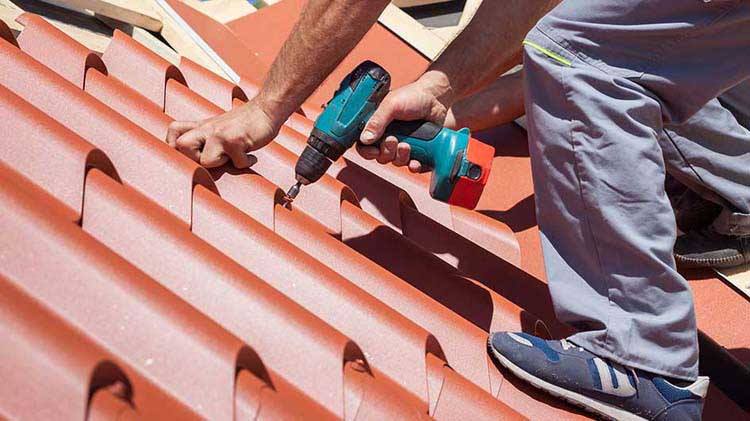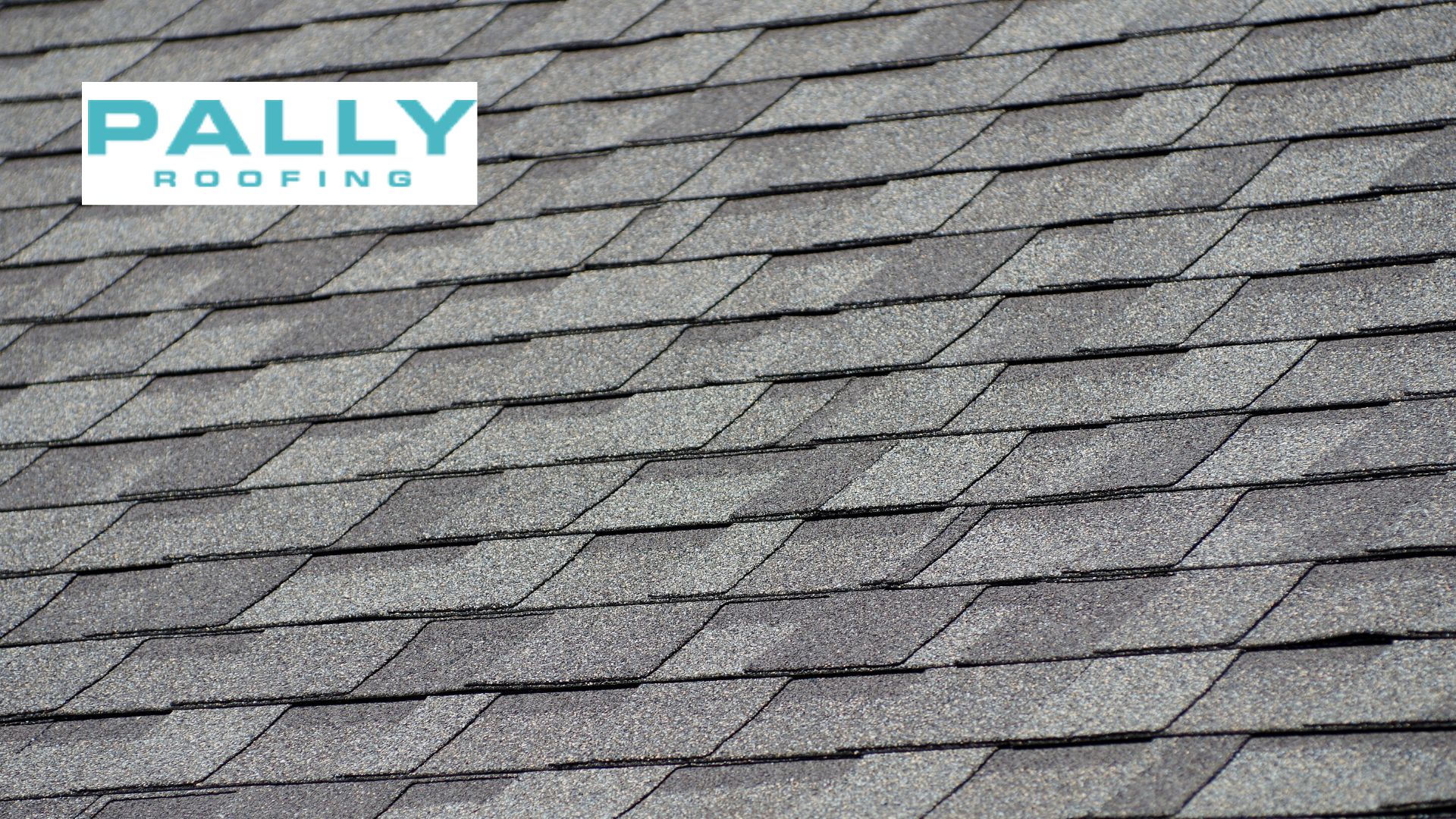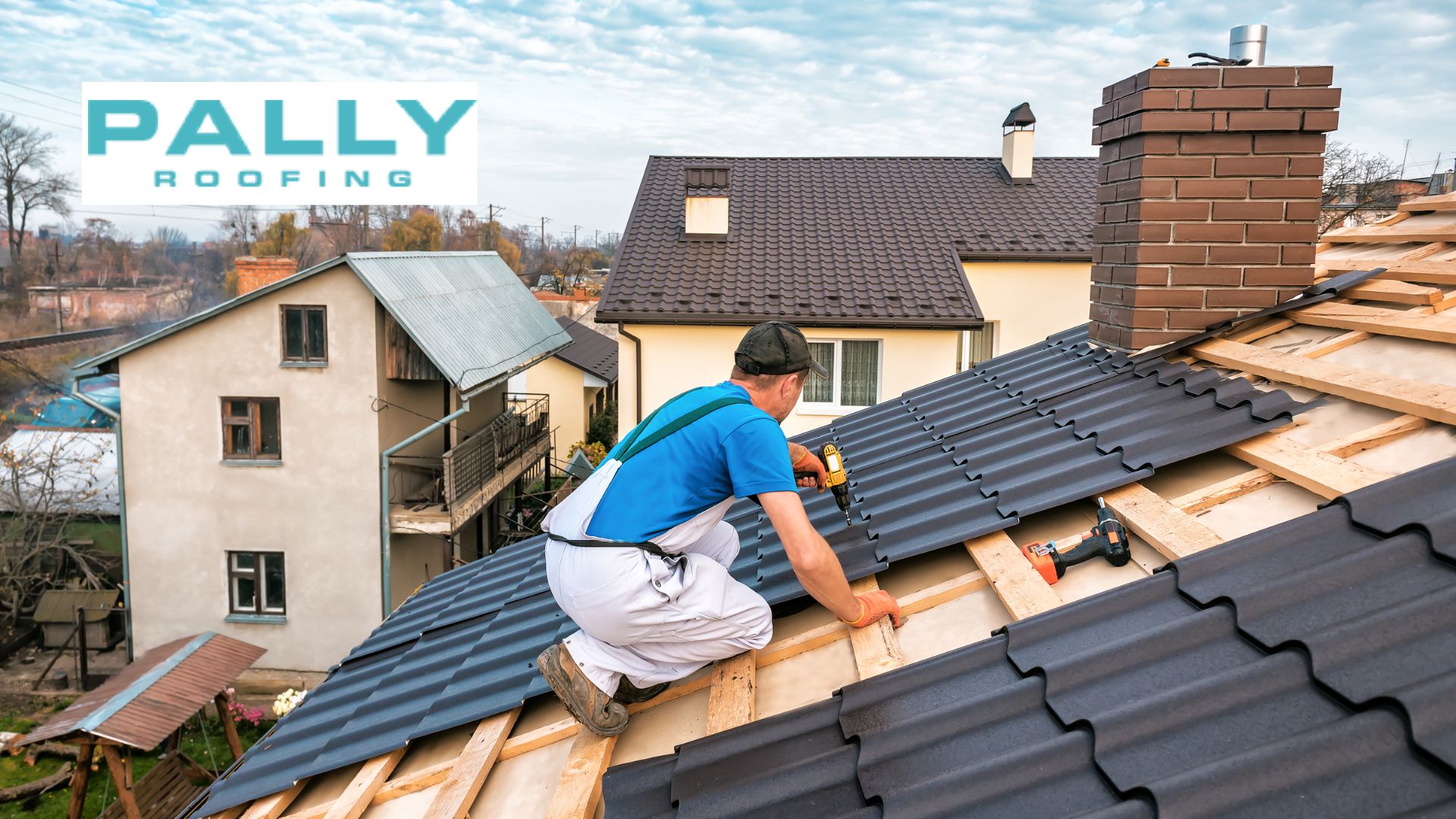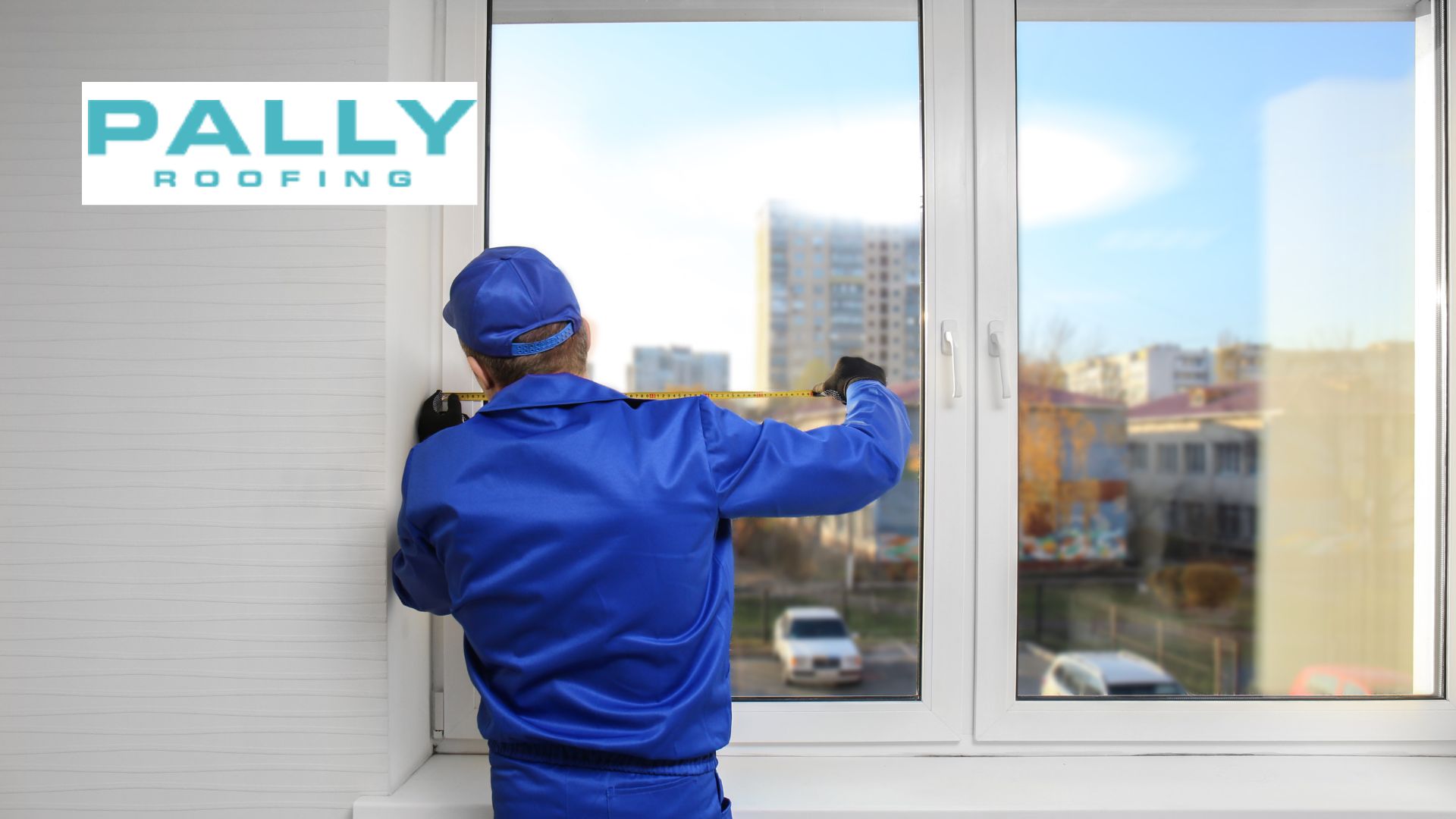Last updated on March 10th, 2025 at 08:58 am
In roofing solutions, a composition roof stands out as a popular and versatile option, offering a blend of durability, affordability, and aesthetic appeal. Whether constructing a new home or renovating an existing one, composition roofing provides a reliable solution that can withstand the rigors of various climates and environments.
Table of Contents
Moreover, Composition roofs are easy to maintain and do not require much upkeep. They are also resistant to mold and mildew growth.
Welcome to Pally Roofing, your trusted roofing solution in Ohio! At Pally Roofing, we understand the critical role that a robust roof plays in ensuring the safety and well-being of your home or business. With years of experience and a dedicated team of professionals, we specialize in delivering top-tier roofing services tailored to your needs.
Types of Composition Roof
Composition roofing offers a diverse array of materials, each with its unique characteristics and benefits. Understanding the different types of composition roofing materials available in the market is crucial for homeowners and builders looking to make informed decisions about their roofing needs.
1. Asphalt Shingles
Asphalt shingles are among the most popular and widely used roofing materials in North America. They comprise a fiberglass mat or organic felt saturated with asphalt and coated with mineral granules. Asphalt shingles come in various styles, including three-tab and architectural, offering versatility in design and aesthetics.
Advantages:
Affordability: Asphalt shingles are cost-effective and budget-friendly, making them an attractive option for homeowners on a tight budget.
Durability: Asphalt shingles are known for their durability and resistance to harsh weather conditions, including wind, rain, and hail.
Ease of Installation: Asphalt shingles are lightweight and easy to install, reducing labor costs and installation time.
Disadvantages:
Limited Lifespan: While asphalt shingles offer decent durability, they have a shorter lifespan than roofing materials such as metal or tile.
Susceptibility to Algae Growth: Asphalt shingles may be prone to algae growth in humid climates, requiring regular maintenance to prevent discoloration.
2. Fiberglass Shingles:
Fiberglass shingles are a type of asphalt shingle reinforced with fiberglass matting. The fiberglass adds strength and durability to the shingle, making it more resistant to damage from impact and weathering.
Advantages:
Lightweight: Fiberglass shingles are lightweight, making them easier to handle and install.
Fire Resistance: Fiberglass shingles are inherently fire-resistant, providing an added layer of safety for your home.
Energy Efficiency: Some fiberglass shingles are designed to reflect solar heat, reducing energy consumption and lowering cooling costs.
Disadvantages:
Vulnerability to Temperature Fluctuations: Fiberglass shingles may expand and contract with fluctuations in temperature, potentially leading to cracking or warping over time.
Limited Color Options: Fiberglass shingles may have fewer color options compared to other types of roofing materials.
3. Organic Shingles:
Organic shingles, or felt shingles, are made from a base of organic materials such as cellulose fibers or recycled paper. These materials are saturated with asphalt and coated with adhesive and granules.
Advantages:
Flexibility: Organic shingles are more flexible than fiberglass shingles, making them easier to install on roofs with complex shapes or angles.
Sound Insulation: Organic shingles offer better sound insulation than fiberglass shingles, reducing noise from rain or hail.
Disadvantages:
Susceptibility to Moisture Absorption: Organic shingles may absorb moisture over time, leading to mold or rot if not properly maintained.
Environmental Impact: Organic shingles may involve chemicals and adhesives with negative ecological implications.
Composition Roofing Materials
Composition roofing materials are engineered to provide durability, longevity, and aesthetic appeal to residential and commercial properties. Understanding the composition of these materials is essential for homeowners and builders seeking reliable roofing solutions.
Asphalt:
Asphalt is a primary component in many composition roofing materials, including asphalt and organic shingles. It is the waterproofing agent, protecting the underlying structure from moisture intrusion. Asphalt combines various additives and fillers to enhance its performance and durability.
Fiberglass:
Fiberglass is a reinforcing material commonly used in fiberglass shingles. It provides strength and stability to the shingle, making it more resistant to damage from impact and weathering. Fiberglass also helps to maintain the shape and integrity of the shingle, ensuring long-term performance and reliability.
Organic Materials:
Organic materials such as cellulose fibers or recycled paper produce organic shingles. These materials serve as the shingle’s base, providing flexibility and resilience. Organic shingles are typically saturated with asphalt and coated with adhesive and granules to enhance their durability and weather resistance.
When you choose Pally Roofing for your composition roofing needs, you can have confidence knowing that your roof is built to last. Our experienced team of professionals will work diligently to install high-quality materials that not only protect your home or business but also enhance its beauty and value.
How to Choose a Composition Roof?
When choosing a composition roof, there are a few things to keep in mind, including:
- Your budget: Composition roofs are a more affordable option than many other types of roofs, but they are still a significant investment. Make sure to consider your budget when choosing a roofing material.
- The climate: Composition roofs are a good choice for homes in climates that experience harsh weather conditions. If you live in an area with milder weather, there are other roofing materials that may be a better choice.
- The look of your home: Composition roofs are available in a variety of colors and styles, so you can choose a roof that complements the look of your home.
- The level of maintenance: Composition roofs are easy to maintain, but they still require some upkeep. If you do not want to deal with regular maintenance, there are other roofing materials that may be a better choice.
Keep in mind that composition roofs have a limited lifespan and can be susceptible to damage from high winds and hail. When choosing a roofing material, make sure to consider your budget and the climate in your area. You should also think about the look of your home and the level of maintenance you are willing to do.

Installation Process of Composition Roofing
Installing composition roofing requires careful planning, precise execution, and adherence to industry best practices. Proper installation techniques are essential for ensuring the longevity, durability, and performance of the roof.
Step-by-Step Guide to Installing Composition Roofing
1. Preparation:
Clear the roof of debris and ensure the surface is clean and smooth.
Install underlayment to provide an additional layer of protection against moisture and leaks.
2. Starter Shingles:
Begin by installing starter shingles along the roof’s eaves to provide a solid foundation for the rest of the shingles.
Starter shingles help prevent wind uplift and water infiltration at the roof’s edges.
3. Shingle Installation:
Start laying the shingles from the bottom edge of the roof, working your way up in overlapping rows.
Follow the manufacturer’s instructions for the specific type of shingles being installed.
Use roofing nails to secure the shingles, ensuring they are correctly fastened but not overdriven.
Pay attention to the alignment and spacing of the shingles to achieve a uniform and aesthetically pleasing finish.
4. Flashing Installation:
Install flashing around roof penetrations such as chimneys, vents, and skylights to prevent water intrusion.
Use high-quality flashing materials and sealants to ensure a watertight seal.
5. Ridge Vent Installation:
Install ridge vents along the roof’s peak for proper ventilation and airflow.
Ridge vents help regulate temperature and moisture levels in the attic, prolonging the roof’s life and preventing issues such as mold and rot.
6. Final Inspection:
Once the shingles, flashing, and ridge vents are installed, thoroughly inspect the roof to ensure everything is aligned correctly and sealed.
Address any issues or concerns promptly to prevent future problems.
Importance of Proper Installation Techniques
Proper installation techniques are critical for ensuring the longevity and performance of a composition roof. A well-installed roof protects the structure from the elements and enhances its appearance and value. Here are some reasons why proper installation is essential:
Weather Resistance: A properly installed roof can withstand harsh weather conditions such as rain, wind, and snow without succumbing to leaks or damage.
Durability: Properly installed shingles and flashing components are less likely to become dislodged or damaged, ensuring the roof’s longevity.
Energy Efficiency: Correct installation techniques, including proper ventilation, can improve the energy efficiency of the roof, reducing heating and cooling costs.
Warranty Coverage: Many manufacturers offer warranties on their roofing materials, but these warranties often require professional installation by certified contractors to remain valid.
Maintenance and Care for Composition Roofing
Proper maintenance is vital to prolonging the lifespan and ensuring the optimal performance of your composition roofing. Regular inspections, cleaning, and addressing common issues are essential for preserving the integrity of your roof and protecting your investment.
Tips for Maintaining and Prolonging the Lifespan of a Composition Roof
Regular Inspections:
Schedule annual inspections by a professional roofing contractor to assess the condition of your composition roof.
Look for signs of damage, such as missing or damaged shingles, curling or buckling, and signs of water infiltration.
Prompt Repairs:
Address any issues or damage identified during inspections promptly to prevent further deterioration.
Replace missing or damaged shingles, repair flashing, and seal any leaks to maintain the roof’s integrity.
Cleaning and Debris Removal:
Regularly clean debris such as leaves, branches, and dirt from the roof surface and gutters.
Debris buildup can trap moisture and promote the growth of algae and moss, leading to premature deterioration of the roofing materials.
Preventing Algae Growth:
Install zinc or copper strips along the ridge of the roof to inhibit the growth of algae and moss.
Clean the roof surface with water and bleach to remove existing algae growth.
Proper Ventilation:
Ensure adequate ventilation in the attic to prevent moisture buildup and heat accumulation.
Proper ventilation helps prolong the roof’s life and prevents mold and rot.
Conclusion
As you consider your roofing options, we encourage you to explore the benefits of composition roofing and the unparalleled service offered by Pally Roofing. Trust us to deliver exceptional results that enhance your property’s beauty, value, and protection.
Choose Pally Roofing for superior craftsmanship, reliability, and peace of mind. Contact us today to schedule a consultation and experience the difference that quality composition roofing can make for your home or business.
Frequently Asked Questions!
What is composition roof?
Composition roof is a type of roofing made from asphalt or fiberglass shingles, providing durability and affordability.
What is composition roof material?
Composition roof material typically consists of asphalt or fiberglass shingles, reinforced with various additives for strength and weather resistance.
Is composition roof good?
Yes, composition roof is generally considered good due to its affordability, durability, and versatility in various weather conditions.
What is composition roof type?
Composition roof type refers to the variety of materials used, such as asphalt, fiberglass, or organic shingles, offering versatility in design and performance.
https://www.google.com/maps?cid=9867860538458984182
Author
-

With more than 16 years of hands-on experience, Phillip Schmucker is the knowledgeable owner of Pally Roofing. His dedication to superior roofing services has earned him a reputable place in the industry. Phillip also shares his extensive expertise through writing, providing readers with practical tips and professional advice on various roofing topics. Follow him on LinkedIn.
View all posts








